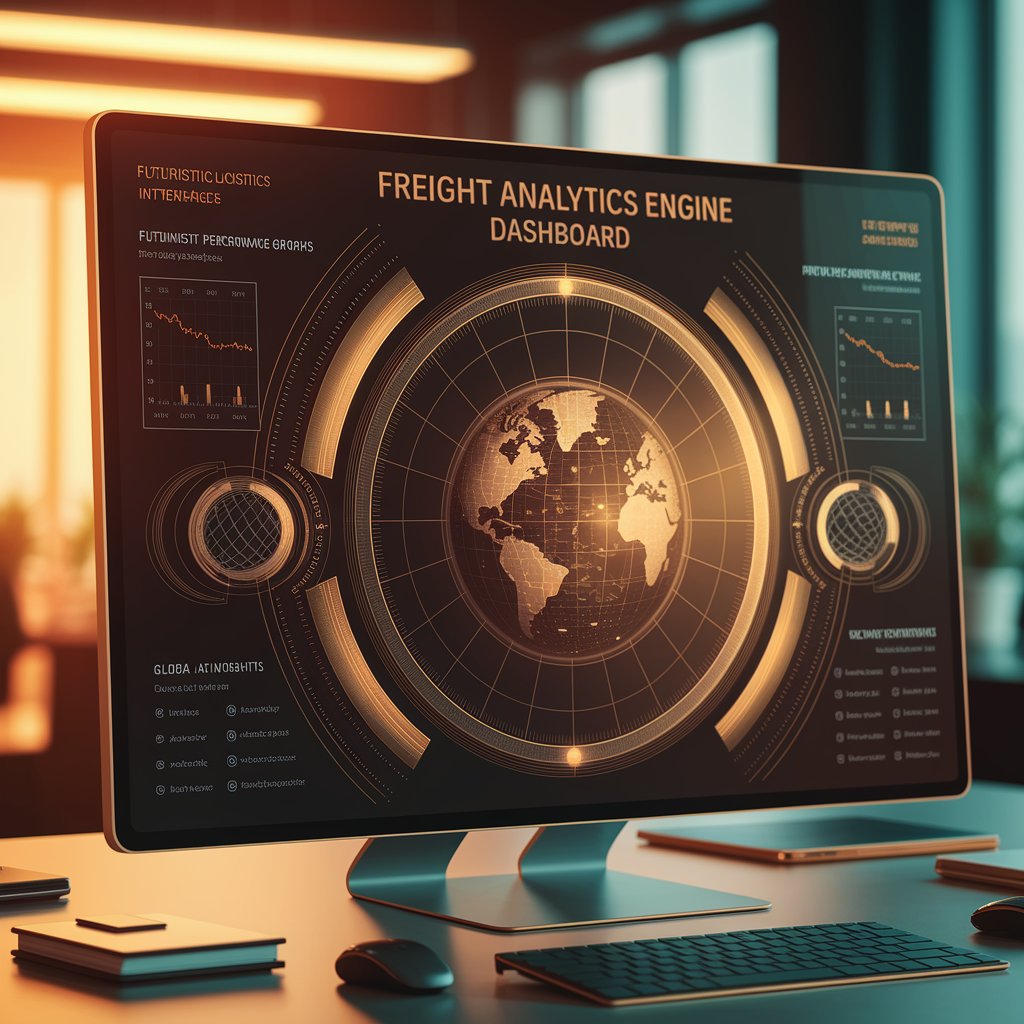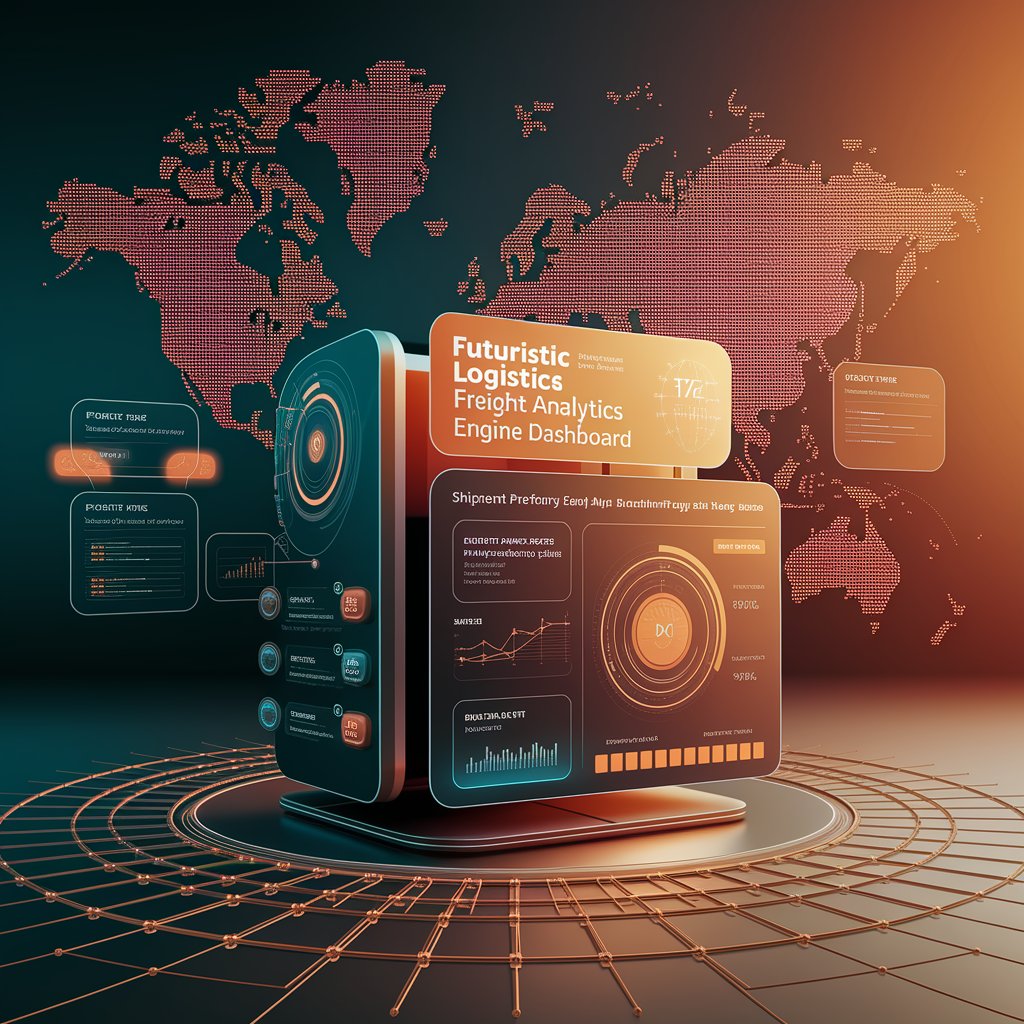Freight Analytics Engine: Turning Logistics Data into Real-Time Intelligence
Yet for many companies, this data remains trapped in silos, unused or analyzed too late to make a difference.

Introduction
That’s where freight analytics engines like Linbis change the game.
Linbis consolidates all freight data into one AI-powered platform that continuously analyzes operations, identifies inefficiencies, and provides actionable insights in real time.
Instead of relying on historical reports, logistics managers can see what’s happening right now — and what’s likely to happen next.
Step 1: Unified Data Infrastructure
Linbis starts by connecting every data source across your logistics ecosystem:
- TMS (Transportation Management Systems) for shipment and routing data.
- WMS (Warehouse Management Systems) for load tracking and storage metrics.
- ERP and CRM systems for customer, financial, and operational information.
- Carrier APIs and IoT sensors for live GPS tracking, temperature, and cargo conditions.
- External sources like weather, port congestion, and customs clearance events.
All this data flows into a single repository — structured, synchronized, and ready for AI-powered analysis. This eliminates manual data collection and ensures every team operates on a consistent, reliable source of truth.
Step 2: Advanced AI Data Processing
Once connected, Linbis’s freight analytics engine uses advanced machine learning algorithms to clean, process, and interpret data automatically.
It detects patterns and anomalies across thousands of variables:
- Delivery delays caused by traffic, customs, or scheduling errors.
- Carrier inefficiencies like excessive idle time or low vehicle utilization.
- Billing inconsistencies in freight invoices.
- Underperforming routes that increase costs or fuel consumption.
This continuous data refinement ensures logistics teams can trust every number on their dashboard.
Step 3: Predictive and Prescriptive Analytics
Linbis doesn’t just analyze what happened — it predicts what’s coming.
Through predictive modeling, it can:
- Forecast future freight costs based on historical rates and global trends.
- Anticipate capacity constraints or port delays before they occur.
- Identify seasonal demand surges and prepare resources accordingly.
- Recommend alternate carriers or routes when risk is detected.
This predictive layer evolves into prescriptive intelligence, where Linbis not only identifies potential issues but also suggests precise, data-driven actions to fix them — instantly.

Step 4: Dynamic Dashboards and Visualization
Linbis translates complex logistics data into clear, interactive dashboards that adapt to each user:
- Operations teams see real-time shipment progress, load utilization, and delays.
- Finance teams view cost breakdowns, margin performance, and rate comparisons.
- Executives monitor KPIs, sustainability metrics, and profitability trends.
Every dashboard is customizable, showing only what matters to each department — and updating automatically as new data flows in.
Visual elements like heatmaps, timelines, and trend graphs make it easy to spot inefficiencies, bottlenecks, or emerging opportunities.
Step 5: KPI Benchmarking and Performance Tracking
Linbis goes beyond reporting by benchmarking every KPI across time, routes, and carriers:
- On-time delivery rate by origin and destination.
- Freight cost per ton-mile or per container.
- Fuel efficiency metrics per carrier or lane.
- Customer satisfaction correlation with logistics performance.
With this data, logistics managers can evaluate which partners deliver consistent performance, which routes drive profitability, and where operational waste can be reduced.
Step 6: Automation and Decision Support
The Linbis freight analytics engine directly integrates insights into automated workflows:
- Sends alerts when performance metrics drop below thresholds.
- Auto-generates reports for management and clients.
- Suggests automation opportunities (e.g., rerouting, rebooking, re-invoicing).
- Connects with AI modules to trigger proactive decisions — not reactive responses.
This creates a closed feedback loop where insights drive automation, and automation generates more valuable data for future analysis.
Step 7: Continuous Learning and Optimization
Every data cycle enhances Linbis’s intelligence.
The system continuously learns from your logistics patterns to refine predictions and recommendations:
- Adjusts performance benchmarks dynamically.
- Improves accuracy with every new shipment.
- Recognizes new variables influencing costs or delays.
- Evolves to support new markets, regulations, or business models.
This means your freight analytics engine doesn’t just report results — it gets smarter over time, growing alongside your business.

Advanced Features
- AI-powered predictive and prescriptive analytics.
- Dynamic dashboards with customizable KPIs.
- Automated alerts, reporting, and workflow integration.
- Carrier, cost, and sustainability benchmarking.
- Continuous machine learning for smarter forecasting.
Real-World Example 🚢
A North American freight forwarder managing multimodal shipments implemented the Linbis freight analytics engine to centralize all data from its ocean, air, and trucking operations.
After just 90 days:
- Operational visibility increased by 87%.
- Manual reporting time dropped by 75%.
- Fuel costs reduced by 19% through optimized routing.
- Carrier performance improved by 22%.
With real-time analytics and predictive alerts, they shifted from managing problems to preventing them entirely.

Benefits 📈
- Visibility: End-to-end tracking and performance analytics.
- Accuracy: Unified, validated data across every department.
- Speed: Real-time dashboards update as operations evolve.
- Optimization: AI insights identify cost and time savings instantly.
- Scalability: Manage global operations and multi-carrier networks seamlessly.
- Sustainability: Monitor and minimize environmental impact.
Conclusion
The freight analytics engine from Linbis represents the next step in intelligent logistics.
By combining AI, automation, and real-time data visualization, it empowers companies to operate with unprecedented accuracy, agility, and control.
Freight management is no longer about reacting to data — it’s about predicting, optimizing, and automating every logistics decision before it happens.
With Linbis, you don’t just move freight — you move smarter, faster, and more profitably.
